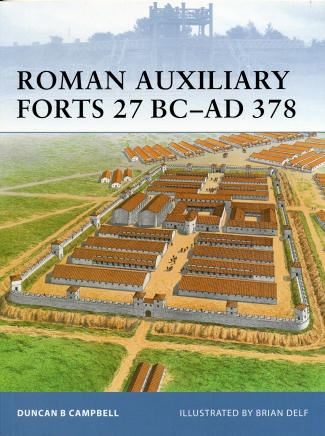 During
the times of the Roman Empire, it encompassed a considerable part of the western
world. This vast expanse needed to have it borders protected against its many
enemies. As such it needed a considerable number of fortifications to help
protect the border areas and the lines of commerce. During this time, it was
quite common for most of the protectors of these borders to be local troops, or
auxiliaries. This resulted in buildings that were designed to fit the local
terrain and ones that while Roman in nature, incorporated a lot of local
building techniques.
During
the times of the Roman Empire, it encompassed a considerable part of the western
world. This vast expanse needed to have it borders protected against its many
enemies. As such it needed a considerable number of fortifications to help
protect the border areas and the lines of commerce. During this time, it was
quite common for most of the protectors of these borders to be local troops, or
auxiliaries. This resulted in buildings that were designed to fit the local
terrain and ones that while Roman in nature, incorporated a lot of local
building techniques.
Naturally, as time progressed, so did the design and function
of these forts. The author, Duncan Campbell covers all of this starting with a
general look at the forts under the various Roman Emperors. Much of the
discussion in this section covers just what kind of forces and how many were
normally housed in these forts. They varied quite a bit in size depending on the
importance of the structure to the local defense, and that is covered in the
second major area of the book. The third part covers the design of the
forts themselves as to the purpose of the various structures normally contained
in these forts. I found it particularly interesting that the barracks for
horsemen had the forward room devoted to the horse, while the larger back room
contained the living quarters of the rider. It must have been quite an odorous
experience, to say the least. Of course, living quarters were generally shared
with several other men with single and larger units saved for the upper ranks.
The penultimate section in the book is living in these forts
and what it must have been like. Though crude by current standards, they were
surprisingly self-contained with hospitals, granaries and of course, baths. The
last section is on what the later forts looked like, and they were considerably
more robust, made of a great deal of stone rather than wood used in most of
Europe. Fortunately for us all, there are a number of extant sites, some of
which have been partially rebuilt so we can see what they may have looked like
during their active period.
All of this is superbly illustrated by photographs of
the sites as they appear today as well as the excellent illustrations of Brian
Delf, whose work allows us a look at these places as photos of the ruins cannot
easily portray.
In all, a fine addition to the Fortress series and a book
that I believe you will find interesting.
September 2009
For more on the complete line of Osprey books,
visit www.ospreypublishing.com. In the US, it is
Osprey Direct at 44-02 23rd St, Suite 219, Long Island City, NY 11101., where you can
get a catalogue of available books.
If you would like your product reviewed fairly and quickly, please contact
me or see other details in the Note to
Contributors.
 During
the times of the Roman Empire, it encompassed a considerable part of the western
world. This vast expanse needed to have it borders protected against its many
enemies. As such it needed a considerable number of fortifications to help
protect the border areas and the lines of commerce. During this time, it was
quite common for most of the protectors of these borders to be local troops, or
auxiliaries. This resulted in buildings that were designed to fit the local
terrain and ones that while Roman in nature, incorporated a lot of local
building techniques.
During
the times of the Roman Empire, it encompassed a considerable part of the western
world. This vast expanse needed to have it borders protected against its many
enemies. As such it needed a considerable number of fortifications to help
protect the border areas and the lines of commerce. During this time, it was
quite common for most of the protectors of these borders to be local troops, or
auxiliaries. This resulted in buildings that were designed to fit the local
terrain and ones that while Roman in nature, incorporated a lot of local
building techniques.